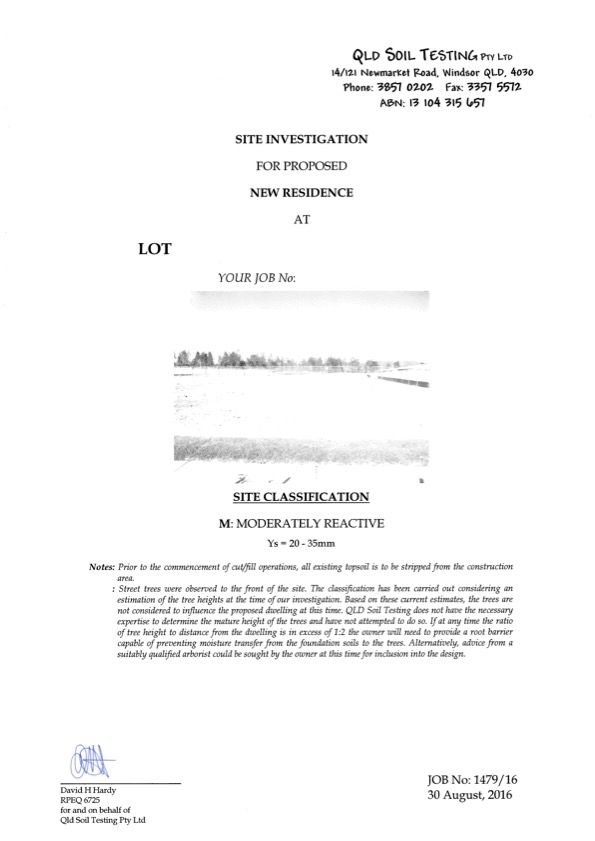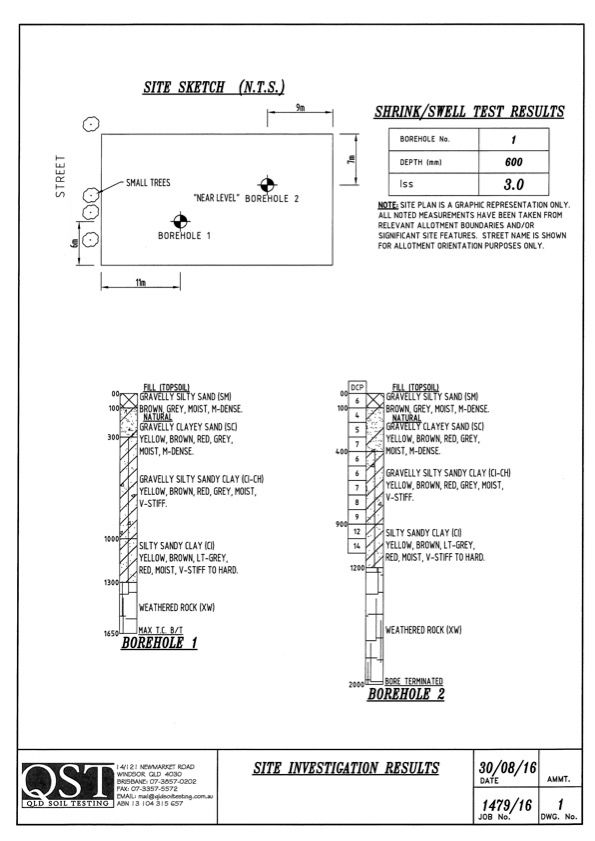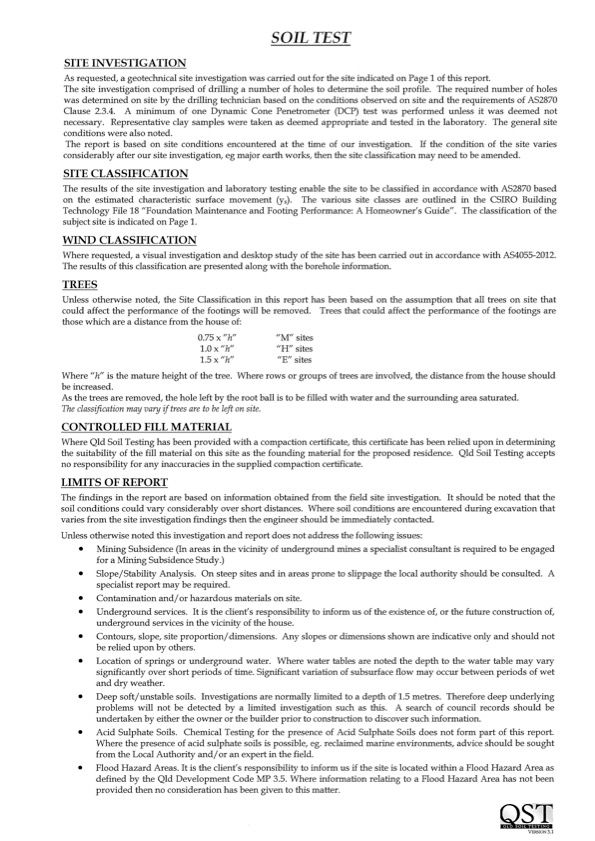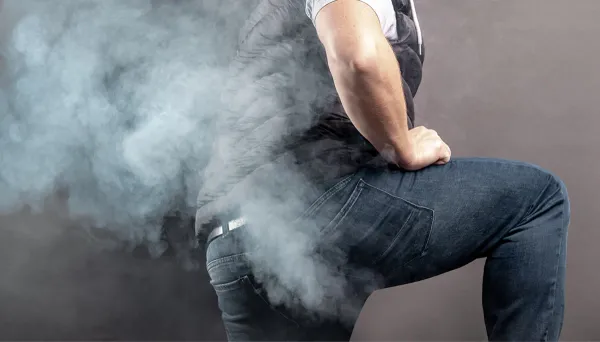Take The Quiz On This Post
Read the post, then take the quiz—test your knowledge and see what you’ve learned!
Introduction
Have you ever been confused by the technical jargon in a geotechnical report? All those numbers and unfamiliar terms relating to soil tests can seem bewildering. But don't worry, we're here to demystify it for you. As a property owner or developer, understanding geotechnical soil tests is important for making informed decisions about your land or projects.
The tests measure key properties of soil like density, strength, and permeability to determine how suitable the ground is for construction. Knowing the results helps engineers design stable foundations and structures tailored to your site's conditions. In this article, we'll walk you through the common geotechnical tests, explain what the results mean in simple terms, and show you how to use the information to your advantage. You'll be interpreting those reports like a pro in no time.
Why Geotechnical Soil Tests Are Required for New Builds
So you're building a new home and the geotechnical report has come back with the soil test results. What do all these numbers and classifications mean? Understanding the geotechnical soil tests is crucial to ensuring your foundation is stable and secure.
Geotechnical engineers will examine soil samples from your site to determine properties like soil type, strength, compressibility, and permeability. The soil type, whether sand, clay, silt or loam, determines how well it will compact and support weight. Stronger, denser soils are better for building foundations.
Tests like the particle size distribution and Atterberg limits help classify the soil and predict how it will behave under stress. The California Bearing Ratio or CBR measures how much weight the soil can withstand before becoming unstable. Higher CBR values, over 5%, mean the soil should readily support foundations and pavements.
Moisture content and density tests determine if the soil is too wet or too compacted for construction. Permeability tests assess how quickly water will drain through the soil. Well-draining, permeable soils reduce hydrostatic pressure under foundations.
Understanding your geotechnical report gives insights into how to prepare the site and design stable foundations. The soil tests take the guesswork out of building on unknown ground and provide the data to engineer solid footings for your new structure. Don’t be intimidated by the numbers and terms, just ask your geotechnical engineer to explain the results and recommendations in plain terms.
Common Soil Tests Used in Geotechnical Engineering

Once the soil samples are collected from your site, the next step is for them to be tested. Geotechnical engineers use several common tests to determine properties like soil composition, density, strength, and more. Understanding these tests and their results is key to designing stable foundations and structures.
Compression tests measure how much pressure soil can withstand before compacting. They determine parameters like maximum dry density and optimum moisture content, which are important for soil compaction on site.
Sieve analysis tests sort soil particles by size. They identify the percentages of gravel, sand, silt and clay in a sample. Knowing a soil's particle size distribution helps predict how well it will compact and drain.
Hydrometer tests also measure particle size but can detect even finer particles than sieves. They determine the percentages of very fine silts and clays, which strongly influence a soil's shrink-swell potential, strength, and permeability.
Atterberg limits tests evaluate the moisture content at which soil transitions between liquid, plastic, and solid states. They determine parameters like liquid limit, plastic limit, and plasticity index. These values indicate how much a soil will shrink and swell with changes in moisture.
Consolidation tests measure how much and how fast a soil sample will compress under a load. They determine parameters like compression index and coefficient of consolidation, which are used to calculate settlement over time. This is crucial for estimating how much foundations and structures will settle.
Permeability tests measure a soil's ability to transmit water and air. They determine parameters like hydraulic conductivity and air permeability. Understanding a soil's permeability is essential for controlling groundwater and predicting how well it will compact.
Shear strength tests measure a soil's ability to resist sliding forces. They determine parameters like cohesion and angle of internal friction. A soil's shear strength is one of the most important properties for designing stable slopes and foundations.
These common geotechnical tests provide invaluable insights into your soil's properties and behaviour. Interpreting the results correctly is key to building stable and long-lasting structures.
How to Interpret Soil Test Results

So you’ve had geotechnical testing done on your site and now have a report full of numbers and charts. How do you make sense of it all and understand what it means for your project? The key is to know what each test measures and how the results compare to recommended levels.
Grain size analysis
This test determines the distribution of particle sizes in the soil, from boulders down to clay particles. The results are shown in a graph indicating the percentage of each size. A good distribution of particle sizes, with a mix of sand, silt and clay, means the soil should have adequate strength and drainage. A predominance of fine particles like clay can indicate drainage or stability issues that may need to be addressed.
Density and compaction
These tests check if the soil has been compacted enough to support structures or pavements. The results will be a measurement of dry density, which is then compared to the maximum density possible for that soil type. A lower result means the soil needs more compacting. For construction, a minimum of 95% of maximum density is usually required.
California Bearing Ratio (CBR)
This measures how well the soil can support loads, like those from vehicles or foundations. The results are expressed as a percentage, with higher being better. A CBR of 5% or more is typically suitable for pavements, while most foundations require at least 15-30% depending on the structure.
Shear strength
This determines how much force the soil can withstand before its particles start to slide against each other. The results are given in kilopascals (kPa) for the cohesive strength and friction angle. Higher results mean the soil is more stable. Most building foundations require at least 25-50 kPa cohesion and a friction angle of 30 degrees or more.
By understanding these common soil tests and comparing the results to recommended levels for your project, you can assess if the site conditions are suitable or if ground improvements may be needed. Get clarification from your geotechnical engineer if anything in the report is unclear. With the right knowledge, those confusing numbers can give you valuable insights into your soil.

What the Results Mean for Your Building Project
The results from your geotechnical soil tests provide critical information about the ground conditions on your building site. They help determine if the soil can properly support the loads of your planned structure. Understanding what the test results mean will help you make important decisions about your project.
Soil bearing capacity refers to how much weight the soil can hold before compressing. A high bearing capacity means the soil is stable and can support heavy structures. If the bearing capacity is too low, you’ll need to improve the soil or choose a lighter building design.
The soil’s permeability shows how quickly water can pass through it. High permeability allows for good drainage, while low permeability means water will pool. Permeability impacts foundation design and whether drains or waterproofing are needed.
The soil’s pH level measures its acidity or alkalinity. Extreme pH levels can corrode building materials over time. The pH also affects which plants will thrive on the site. Adjusting the soil’s pH may be required before construction.
The soil’s shrink-swell (Ys value) potential refers to how much its volume changes with water content. Highly expansive soils can damage foundations and structures as they swell and shrink. Special design considerations or soil treatment are usually needed in these cases.
Plasticity index (PI) indicates how malleable, sticky and compressible the soil is when wet. Higher PI soils are more difficult to work with and often require stabilisation before building. They can also lead to foundation cracking if not properly addressed.
Knowing all these soil properties helps engineers design foundations and structures suited to your site’s ground conditions. It allows them to specify any soil remediation or reinforcement needed to ensure stability and prevent issues like excessive settling, tilting or cracking. Understanding your soil tests results provides insights into the best approach for your building project.
Working With Geotechnical Engineers to Ensure a Stable Foundation
Working closely with geotechnical engineers is key to ensuring your building foundation is stable and secure. As soil tests are conducted, geotechs analyse the results to determine the bearing capacity and composition of the soil. They then provide recommendations for foundation type and design to suit the soil conditions.
It’s important to understand what the test results mean and how the geotech’s recommendations will impact your project. Meet with them to discuss the findings and ask any questions you may have. Some key things to understand are:
- Soil type (e.g. clay, sand, rock): The soil type determines how much weight it can support and its potential for settlement. Clay soil may require piling for support whereas rock provides a solid base.
- Bearing capacity: This refers to how much weight the soil can support before excessive settlement occurs. Higher bearing capacity means less settlement and a more stable foundation. The geotech will specify the maximum bearing pressure for shallow and deep foundations.
- Groundwater level: If groundwater is present, the foundation must extend below the water table to prevent uplift. The geotech can recommend a design that allows for hydrostatic pressure from groundwater.
- Settlement: All soils settle to some degree, even rock. The geotech estimates how much settlement is expected for the proposed foundation over the lifetime of the structure. Less than 25mm of settlement is typically considered acceptable.
- Foundation options: Based on the soil tests, the geotech will recommend the most suitable foundation type, e.g. raft, strip, pile or pier foundation. They can then provide specific design recommendations for that option.
Follow the recommendations provided in the geotechnical report to ensure a safe and stable foundation for your building project. Discuss any part of the report you do not fully understand with the geotechnical engineers. It is worth investing time upfront to understand the soil and foundation, as this will avoid potential issues during construction and in the long-term performance of your building.

Conclusion
Armed with this knowledge, you'll be able to have informed conversations with your geotechnical engineer and make the right decisions about your project based on facts, not guesses. The tests themselves may be complex, but the insights they provide are invaluable.
By demystifying the jargon and processes, you've taken the first step to gaining a whole new understanding and appreciation of the foundation that supports everything we build.
Not bad for a day's work! Now get out there and start putting that knowledge to use. The soil awaits!







